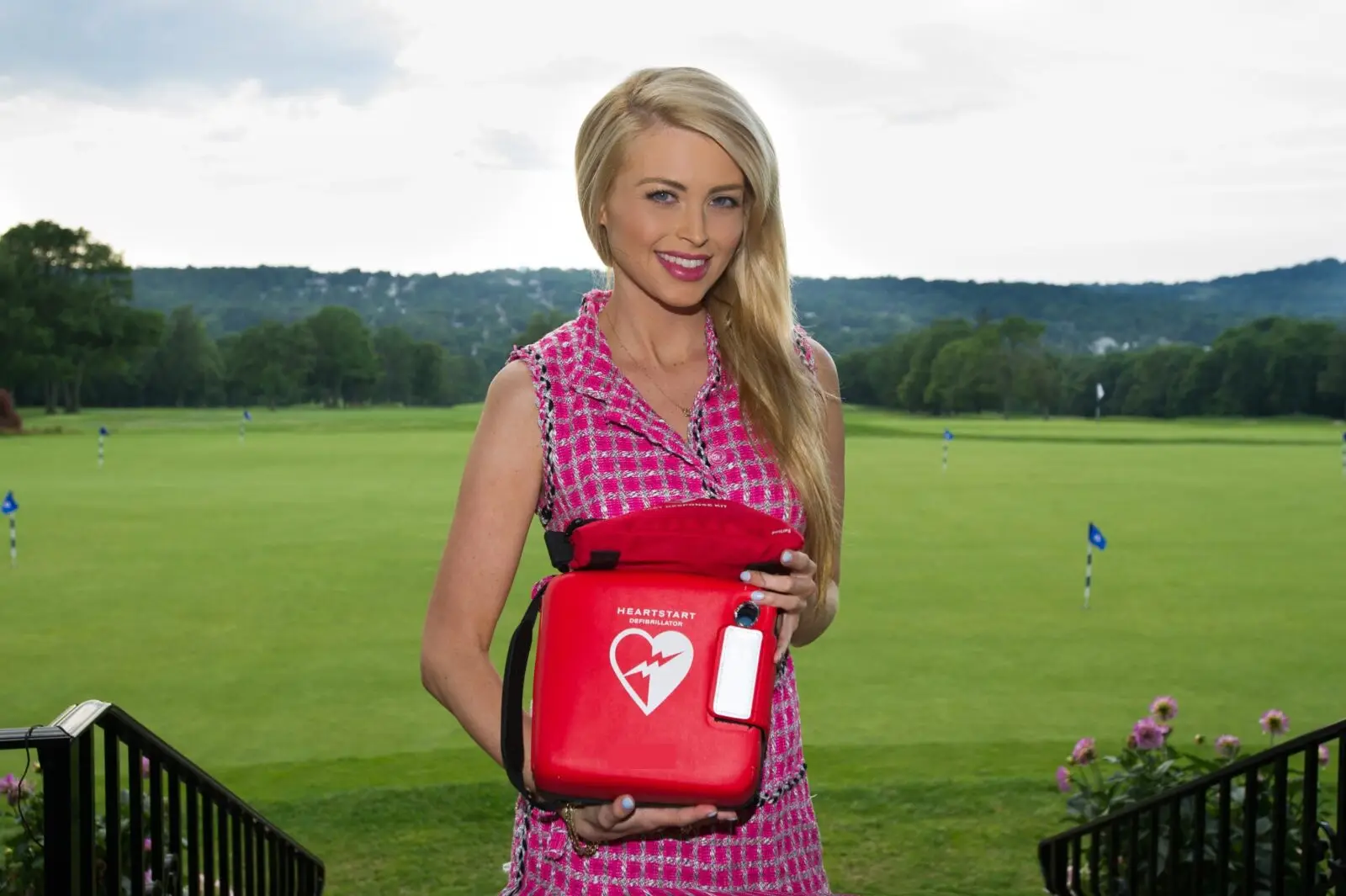Lindsay Davis
Diagnosed with hypertrophic cardiomyopathy
United States of America

Winning has always been on the cards for Lindsay Davis – Miss Ohio United States 2011 – as she now puts her fighting spirit towards greater heart health awareness and care for all.
Dreams of performing in the Paris Opera Ballet were quelled for Lindsay Davis, a former Miss Ohio, when she was 17 years of age. She was the epitome of health, until the night she collapsed after dance practice and she was diagnosed with hypertrophic cardiomyopathy (HCM). She wondered “if I have to give up dance, what will my life be now? When I have children, will they have it? But most importantly – what exactly is HCM.”
In the years preceding Lindsay’s diagnosis, she had searched for answers. A seemingly healthy ballerina was not thought to have an issue warranting a closer look at her heart. “I have a genetic heart condition we commonly hear about in the news when an athlete drops on the field or on the pitch. Many people are not as lucky as I have been so I want the right policies in place that will help others not have to rely on luck to get diagnosed and treated.”
HCM is a genetic disorder that affects the heart walls and the amount of blood that can be pumped. Symptoms of HCM often resemble those of other heart diseases: chest pain, shortness of breath, fatigue, fainting, dizziness, and irregular heartbeat. Estimates put HCM at 1 in 500 people but with awareness still relatively low and diagnosis lagging, the number could be much higher.
“I never know how I’m going to feel when I wake up. Sometimes, the oedema means my body is bearing an extra 20 pounds of water; sometimes I have trouble walking four feet to the next room. My diuretics and beta blockers are a constant companion.”
Lindsay recalls others’ advice to ‘sit in the shade’ or ‘drink some water’ on days when she was feeling breathless, exhausted, or dizzy. Her gym teachers sometimes told her to ‘pick up the pace’ and she noticed classmates going at a faster rate than she could. Feeling singled out, she was determined to push herself even harder, a resilience reflected today in her tireless patient advocacy, legislative work, and in her boundless charity commitments on causes from animal welfare to children’s heart care and juvenile diabetes.
“When you hear of a heart condition, you think ‘oh, my uncle or my grandfather had that’ but heart disease has many forms and can affect anyone. I am determined to show that we can all still be active, effective, and successful. Our dreams might change but they don’t stop. I was forced to give up dance and immediately increased my work with charities. It felt rewarding to give back and to show gratitude for my diagnosis and the extra time I had been given.”
“Shared decision-making” with her cardiologists has made a huge difference which explains her role as a strong advocate of the patient’s voice in the health journey. Following discussion, she has opted for a sub-cutaneous implantable cardioverter defibrillator (S-ICD) instead of a transvenous ICD. The device acts as a ‘tiny internal emergency room’ should her heart require support to restore normal rhythm.
As Lindsay says, “I’m able to live a mostly normal life with the help of science,” noting that while medical devices and timely care are critical, “creating greater education and awareness so that everyone has a chance to know their risks and conditions and find suitable support is equally essential.”
Lindsay’s Law – SCA
In 2017, the Sudden Cardiac Arrest (SCA) Law, also known as Lindsay’s Law, came into effect in Ohio and provides key information resources. The Law also protects student athletes by educating parents, coaches, and the students themselves on the signs and symptoms of underlying heart conditions and removes children from play if they are exhibiting symptoms until they can be cleared by a doctor. It has taken four years for the law to come about, and the aim is for it to become federal law. In addition, Lindsay has worked on legislation to ensure that health education in schools be carried out by those who have been trained to use automated external defibrillators (AED) and perform cardiopulmonary resuscitation (CPR).
Lindsay reflects on her decision to compete in a beauty pageant as a way “to raise awareness and show other young girls it’s still possible to achieve their dreams despite whatever they think might be holding them back or be making them feel different. I also want to raise awareness for equal access to care especially for the many who face disproportionately higher rates of heart disease and stroke.”
Years on from her ballerina days, Lindsay still models and acts in select television programmes: “I wouldn’t trade places at all. I’m on a different stage, one that allows me to connect with other patients, promoting greater awareness of cardiovascular health. Being able to connect with patients and their families and give back for my many blessings makes every second of my work worth it.”